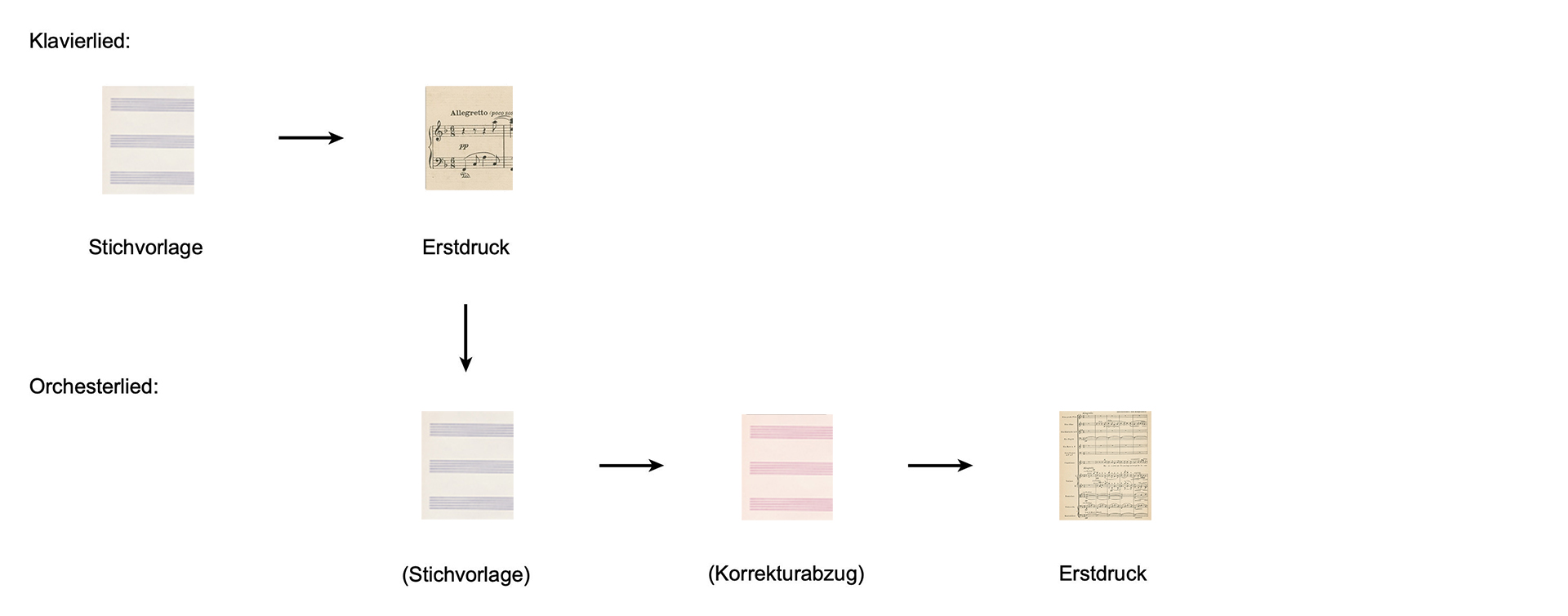Mariä Wiegenlied op. 76 No. 52
Version for medium voice and orchestra
-
Mariä Wiegenlied
Text: Martin Boelitz
- –
- Schlichte Weisen op. 76 Bd. VI for medium voice and piano
Other versions:
- –
1.
| Reger-Werkausgabe | Bd. II/6: Lieder mit Orchesterbegleitung, S. 130–137. |
| Herausgeber | Christopher Grafschmidt, Claudia Seidl. Unter Mitarbeit von Knud Breyer und Stefan König. |
| Verlag | Carus-Verlag, Stuttgart; Verlagsnummer: CV 52.813. |
| Erscheinungsdatum | September 2023. |
| Notensatz | Carus-Verlag, Stuttgart. |
| Copyright | 2023 by Carus-Verlag, Stuttgart and Max-Reger-Institut, Karlsruhe – CV 52.813. Vervielfältigungen jeglicher Art sind gesetzlich verboten. / Any unauthorized reproduction is prohibited by law. Alle Rechte vorbehalten. / All rights reserved. |
| ISMN | 979-0-007-30199-6. |
| ISBN | 978-3-89948-446-5. |
Mariä Wiegenlied
Martin Boelitz: Vor einem alten Bilde, in: Westermanns Monatshefte. Illustrierte Deutsche Zeitschrift für das geistige Leben der Gegenwart, 52. Jg. (1908), vol. 104.2, issue 622 (July 1908 [day unknown]), George Westermann, Braunschweig, p. [580].
Martin Boelitz: Vor einem alten Bild(e), in:
id.: Ausgewählte Gedichte, Fritz Eckardt, Leipzig
unknown
Used for comparison purposes in RWA: First edition
Copy shown in RWA: DE, Karlsruhe, Max-Reger-Institut/Elsa-Reger-Stiftung.
Note: Textvorlage: Reger besaß eine Mappe mit vierzehn handschriftlichen Texten des Dichters (lose Blätter), wohl in Abschrift (heute in den Meininger Museen/Max-Reger-Archiv). Reger kreuzte sich das Gedicht (dort ohne Titel) an.
Note: Erste Textzeile: Vorlage und Erstausgabe “im” statt (wie bei Reger) “am” Rosenhag.
Note: In den Bänden, welche die Vorlage für die Ausgewählten Gedichte gebildet haben sollen, ist das Wiegenlied (neben einigen weiteren Gedichten) nicht enthalten.
1. Genesis
Publication
After Bote & Bock had published the sixth volume of Reger’s Schlichte Weisen in October 1912 (subtitled “Aus Christas und Lottis Kinderleben”, “From the child’s life of Christa and Lotti”1), Mariä Wiegenlied became one of Reger’s most popular songs. So in late April 1915, he took the opportunity to offer his publisher a new arrangement of the work. He promised to orchestrate this song “so that it can even be performed by orchestra alone, without a solo voice;2 though of course the effect will be better with voice. The orchestral forces will be very small, so that any orchestra will be able to do it.” (Postcard of 29 April 1915 to Hugo Bock)
Bote & Bock accepted his offer, Reger confirmed receipt of his fee of 100 marks on 4 May, and returned the corrected proofs on 5 June. We have no details about when the first edition was published.3 The title page lists all six of Reger’s orchestrated songs that were published by Bote & Bock.4
2.
Translation by Chris Walton.
1. Early reception
In the Berlin concert to commemorate Reger’s 50th birthday in April 1923, Lula Mysz-Gmeiner sang six of his orchestral songs, though only Mariä Wiegenlied is mentioned by name; it was also encored “by popular request”. (Signale für die Musikalische Welt) And at a Reger evening in Bonn in early February 1939, Johanna Egli had to sing the Wiegenlied “no less than three times” on account of “the grateful appreciation and insistence of the audience”. (General-Anzeiger für Bonn und Umgegend) However, Walter Tetzlaff found it incomprehensible “that ‘An die Hoffnung’, which is magnificent in content and was magnificently performed, was met with rather cool applause by the standards of Bonn, instead of compelling a repeat performance that would have intensified the experience; by contrast, ‘Mariä Wiegenlied’ earned thunderous applause for an encore, though in the context of Reger’s core oeuvre it represents merely a wood shaving that has fallen from the carpenter’s bench while he is at work”. (Westdeutscher Beobachter)
2.
Translation by Chris Walton.
1. Stemma

2. Quellenbewertung
Der Edition liegt als Leitquelle der Erstdruck zugrunde. Als Referenzquelle wurde der Erstdruck des Klavierlieds herangezogen, in seltenen Fällen auch dessen Stichvorlage, die Reger zum Zeitpunkt der Bearbeitung jedoch nicht vorlag.
3. Sources
- Erstdruck
- Erstdruck
Object reference
Max Reger: Mariä Wiegenlied op. 76 No. 52, in: Reger-Werkausgabe, www.reger-werkausgabe.de/mri_work_01126.html, version 4.0, 18th December 2025.
Information
This is an object entry from the RWA encyclopaedia. Links and references to other objects within the encyclopaedia are currently not all active. These will be successively activated.